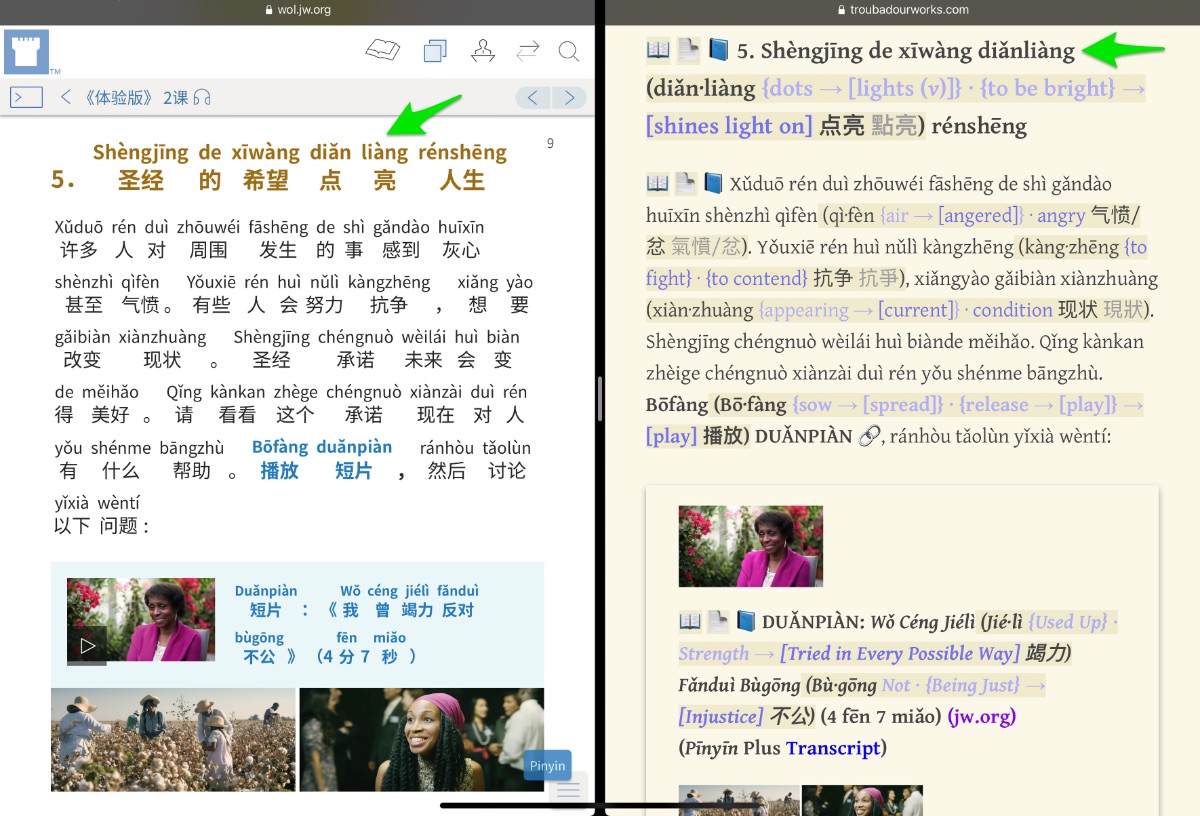Dé’ěrtǎ (Delta 德尔塔 德爾塔) ← Tap/click to show/hide the “flashcard”
[Note: Tap/click on a Pīnyīn (Pīn·yīn {Piecing Together} · Sounds → [Pinyin] 拼音) expression to reveal its “flashcard”, tap/click on a “flashcard” or its Pīnyīn (Pīn·yīn {Piecing Together} · Sounds → [Pinyin] 拼音) expression to hide the “flashcard”.]
As of this writing, deep in the year 2021, the subject of the COVID-19 pandemic has been, to say the least, on people’s minds now for a while. So, it would be good to be able to refer to things related to it in Mandarin when speaking to people in the Mandarin field, or when speaking to our brothers and sisters in the truth.

An electron microscope image of SARS-CoV-2—also known as 2019-nCoV, the virus that causes COVID-19
NIAID
This week’s MEotW, “Dé’ěrtǎ (Delta 德尔塔 德爾塔)”, is one of the more “Mandariny” ways to say “Delta”—as in the Delta variant of the virus that causes COVID-19—in Mandarin.
There are, however, other ways to say “Delta” in Mandarin, e.g.:
- “Děi’ěrtǎ (Delta 得尔塔 得爾塔)”
- “sānjiǎo (sān·jiǎo three · {horns → [corners]} → [triangle; delta] 三角) [xíng (form; shape 形)]”
- “sānjiǎo (sān·jiǎo three · {horns → [corners]} → [triangle (of)] 三角) zhōu ({river islets/islands} → [(river) delta] 洲)”
- “sānjiǎo (sān·jiǎo three · {horns → [corners]} → [triangle; delta] 三角) yì (wing 翼)”
To get an idea of how commonly used these expressions are compared to each other, consider the numbers of Google search results involving these expressions, together with “biànzhǒng (biàn·zhǒng changed · kind; type; variety → [mutation; variant; variety] 变种 變種)” (a past MEotW) and “biànyì zhū ((biàn·yì changed · {to be different} 变异 變異) (zhū {trunk of a tree → [strain]} 株) → [(virus) strain/variant])”, two common ways to say “variant”:
| Search Terms | Google Results Approx. No. |
|---|---|
"德尔塔变种"(Dé’ěrtǎ (Delta 德尔塔 德爾塔) biànzhǒng (biàn·zhǒng changed · kind; type; variety → [mutation; variant; variety] 变种 變種)) |
619,000 |
"德尔塔变异株"(Dé’ěrtǎ (Delta 德尔塔 德爾塔) biànyì zhū ((biàn·yì changed · {to be different} 变异 變異) (zhū {trunk of a tree → [strain]} 株) → [(virus) strain/variant])) |
1,980,000 |
| Search Terms | Google Results Approx. No. |
|---|---|
"得尔塔变种"(Děi’ěrtǎ (Delta 得尔塔 得爾塔) biànzhǒng (biàn·zhǒng changed · kind; type; variety → [mutation; variant; variety] 变种 變種)) |
824 |
"得尔塔变异株"(Děi’ěrtǎ (Delta 得尔塔 得爾塔) biànyì zhū ((biàn·yì changed · {to be different} 变异 變異) (zhū {trunk of a tree → [strain]} 株) → [(virus) strain/variant])) |
13,300 |
| Search Terms | Google Results Approx. No. |
|---|---|
"三角变种"(sānjiǎo (sān·jiǎo three · {horns → [corners]} → [triangle; delta] 三角) biànzhǒng (biàn·zhǒng changed · kind; type; variety → [mutation; variant; variety] 变种 變種)) |
354 |
"三角变异株"(sānjiǎo (sān·jiǎo three · {horns → [corners]} → [triangle; delta] 三角) biànyì zhū ((biàn·yì changed · {to be different} 变异 變異) (zhū {trunk of a tree → [strain]} 株) → [(virus) strain/variant])) |
4 |
"三角形变种"(sānjiǎo (sān·jiǎo three · {horns → [corners]} → [triangle; delta] 三角) xíng (form; shape 形) biànzhǒng (biàn·zhǒng changed · kind; type; variety → [mutation; variant; variety] 变种 變種)) |
127 |
"三角形变异株"(sānjiǎo (sān·jiǎo three · {horns → [corners]} → [triangle; delta] 三角) xíng (form; shape 形) biànyì zhū ((biàn·yì changed · {to be different} 变异 變異) (zhū {trunk of a tree → [strain]} 株) → [(virus) strain/variant])) |
0 |
| Search Terms | Google Results Approx. No. |
|---|---|
"三角洲变种"(sānjiǎo (sān·jiǎo three · {horns → [corners]} → [triangle (of)] 三角) zhōu ({river islets/islands} → [(river) delta] 洲) biànzhǒng (biàn·zhǒng changed · kind; type; variety → [mutation; variant; variety] 变种 變種)) |
20,800 |
"三角洲变异株"(sānjiǎo (sān·jiǎo three · {horns → [corners]} → [triangle (of)] 三角) zhōu ({river islets/islands} → [(river) delta] 洲) biànyì zhū ((biàn·yì changed · {to be different} 变异 變異) (zhū {trunk of a tree → [strain]} 株) → [(virus) strain/variant])) |
982 |
| Search Terms | Google Results Approx. No. |
|---|---|
"三角翼变种"(sānjiǎo (sān·jiǎo three · {horns → [corners]} → [triangle; delta] 三角) yì (wing 翼) biànzhǒng (biàn·zhǒng changed · kind; type; variety → [mutation; variant; variety] 变种 變種)) |
146 |
"三角翼变异株"(sānjiǎo (sān·jiǎo three · {horns → [corners]} → [triangle; delta] 三角) yì (wing 翼) biànyì zhū ((biàn·yì changed · {to be different} 变异 變異) (zhū {trunk of a tree → [strain]} 株) → [(virus) strain/variant])) |
0 |
(Note that the quotation marks in the search terms tell Google to look for the exact sequences of characters that are inside the quotation marks—the results of searching without the quotation marks can be very different.)
Sounds Like…
You may notice that the ways to say “Delta” in Mandarin can be divided into
- those that are derived from the meaning of “Delta” (the uppercase Greek letter delta (Δ), or something that looks like a triangle like it does), and
- those that are derived from the sound of the English word “Delta”.
It is evident from the above Google search results that overall, saying “Delta” in Mandarin using expressions that sound like the English word “Delta” is much more common than doing so using expressions that mean what “Delta” means, or that mean something that looks like what a “Delta” looks like.
In fact, as was shown in the MEotW post about “biànzhǒng (biàn·zhǒng changed · kind; type; variety → [mutation; variant; variety] 变种 變種)”, when talking or writing in Mandarin about the Delta variant, it is very common for people to just use the actual English word “Delta”, which sounds more like the English word “Delta” than anything else, and is not a Mandarin word written using the supposedly ideographic (representing meaning through visible symbols) Chinese characters.
| Search Terms | Google Results Approx. No. |
|---|---|
"delta变种"(Delta biànzhǒng (biàn·zhǒng changed · kind; type; variety → [mutation; variant; variety] 变种 變種)) |
2,230,000 |
"delta变异株"(Delta biànyì zhū ((biàn·yì changed · {to be different} 变异 變異) (zhū {trunk of a tree → [strain]} 株) → [(virus) strain/variant])) |
1,750,000 |
It is no surprise to linguists (language scientists/scholars) that people naturally focus on what words sound like when spoken, because, while of course meaning is what, well, gives life meaning, one of the basic principles of modern linguistics (the scientific study of language) is that speech is primary, and writing is secondary. That means that God designed us humans to express meaning via language primarily using speech that is heard, not writing that is seen, no matter how much lovers of Chinese characters traditionally focus on that visually intricate writing system above all else.—1 Corinthians 14:8–11.

